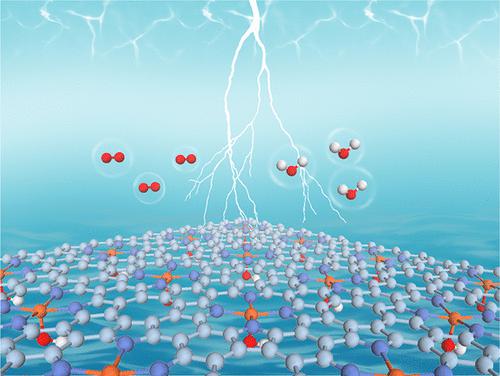当前位置:
X-MOL 学术
›
J. Am. Chem. Soc.
›
论文详情
Our official English website, www.x-mol.net, welcomes your
feedback! (Note: you will need to create a separate account there.)
What is the Real Origin of the Activity of Fe–N–C Electrocatalysts in the O2 Reduction Reaction? Critical Roles of Coordinating Pyrrolic N and Axially Adsorbing Species
Journal of the American Chemical Society ( IF 14.4 ) Pub Date : 2022-09-22 , DOI: 10.1021/jacs.2c08743 Xu Hu 1 , Suya Chen 1 , Letian Chen 1 , Yun Tian 2 , Sai Yao 1 , Zhengyu Lu 1 , Xu Zhang 2 , Zhen Zhou 1, 2
Journal of the American Chemical Society ( IF 14.4 ) Pub Date : 2022-09-22 , DOI: 10.1021/jacs.2c08743 Xu Hu 1 , Suya Chen 1 , Letian Chen 1 , Yun Tian 2 , Sai Yao 1 , Zhengyu Lu 1 , Xu Zhang 2 , Zhen Zhou 1, 2
Affiliation

|
Fe–N–C electrocatalysts have emerged as promising substitutes for Pt-based catalysts for the oxygen reduction reaction (ORR). However, their real catalytic active site is still under debate. The underlying roles of different types of coordinating N including pyridinic and pyrrolic N in catalytic performance require thorough clarification. In addition, how to understand the pH-dependent activity of Fe–N–C catalysts is another urgent issue. Herein, we comprehensively studied 13 different N-coordinated FeNxC configurations and their corresponding ORR activity through simulations which mimic the realistic electrocatalytic environment on the basis of constant-potential implicit solvent models. We demonstrate that coordinating pyrrolic N contributes to a higher activity than pyridinic N, and pyrrolic FeN4C exhibits the highest activity in acidic media. Meanwhile, the in situ active site transformation to *O-FeN4C and *OH-FeN4C clarifies the origin of the higher activity of Fe–N–C in alkaline media. These findings can provide indispensable guidelines for rational design of better durable Fe–N–C catalysts.
中文翻译:

Fe-N-C 电催化剂在 O2 还原反应中活性的真正来源是什么?协调吡咯 N 和轴向吸附物质的关键作用
Fe-N-C 电催化剂已成为氧还原反应 (ORR) 铂基催化剂的有希望的替代品。然而,它们真正的催化活性位点仍在争论中。不同类型的配位氮(包括吡啶和吡咯氮)在催化性能中的潜在作用需要彻底阐明。此外,如何理解 Fe-N-C 催化剂的 pH 依赖性活性是另一个紧迫的问题。在此,我们通过模拟基于恒电位隐式溶剂模型的真实电催化环境,全面研究了 13 种不同的 N 配位 FeN x C 构型及其相应的 ORR 活性。我们证明了配位吡咯 N 比吡啶 N 和吡咯 FeN 具有更高的活性4 C 在酸性介质中表现出最高的活性。同时,活性位点向*O-FeN 4 C和*OH-FeN 4 C的原位转变阐明了Fe-N-C在碱性介质中具有较高活性的原因。这些发现可以为合理设计更耐用的 Fe-N-C 催化剂提供不可或缺的指导。
更新日期:2022-09-22
中文翻译:

Fe-N-C 电催化剂在 O2 还原反应中活性的真正来源是什么?协调吡咯 N 和轴向吸附物质的关键作用
Fe-N-C 电催化剂已成为氧还原反应 (ORR) 铂基催化剂的有希望的替代品。然而,它们真正的催化活性位点仍在争论中。不同类型的配位氮(包括吡啶和吡咯氮)在催化性能中的潜在作用需要彻底阐明。此外,如何理解 Fe-N-C 催化剂的 pH 依赖性活性是另一个紧迫的问题。在此,我们通过模拟基于恒电位隐式溶剂模型的真实电催化环境,全面研究了 13 种不同的 N 配位 FeN x C 构型及其相应的 ORR 活性。我们证明了配位吡咯 N 比吡啶 N 和吡咯 FeN 具有更高的活性4 C 在酸性介质中表现出最高的活性。同时,活性位点向*O-FeN 4 C和*OH-FeN 4 C的原位转变阐明了Fe-N-C在碱性介质中具有较高活性的原因。这些发现可以为合理设计更耐用的 Fe-N-C 催化剂提供不可或缺的指导。

































 京公网安备 11010802027423号
京公网安备 11010802027423号